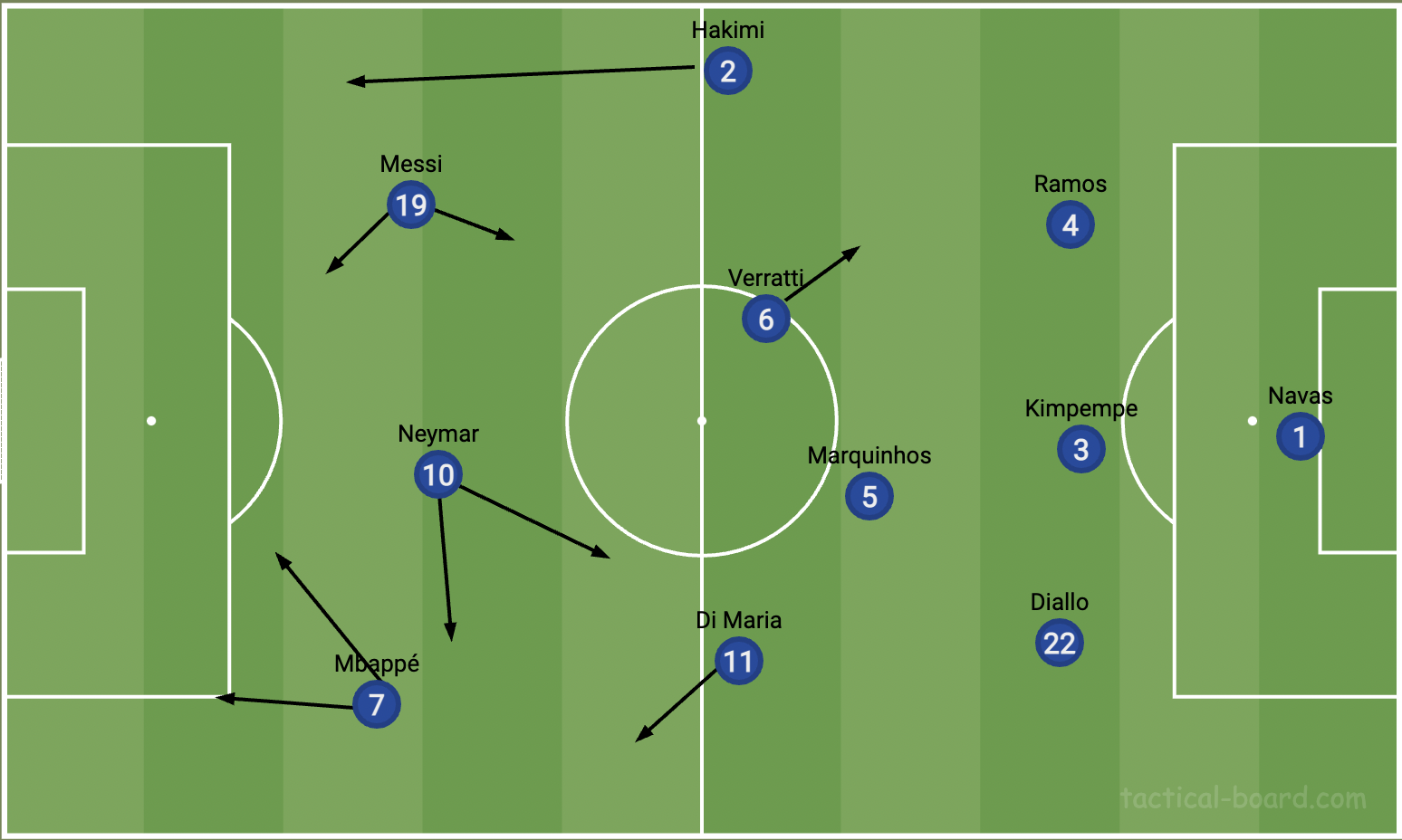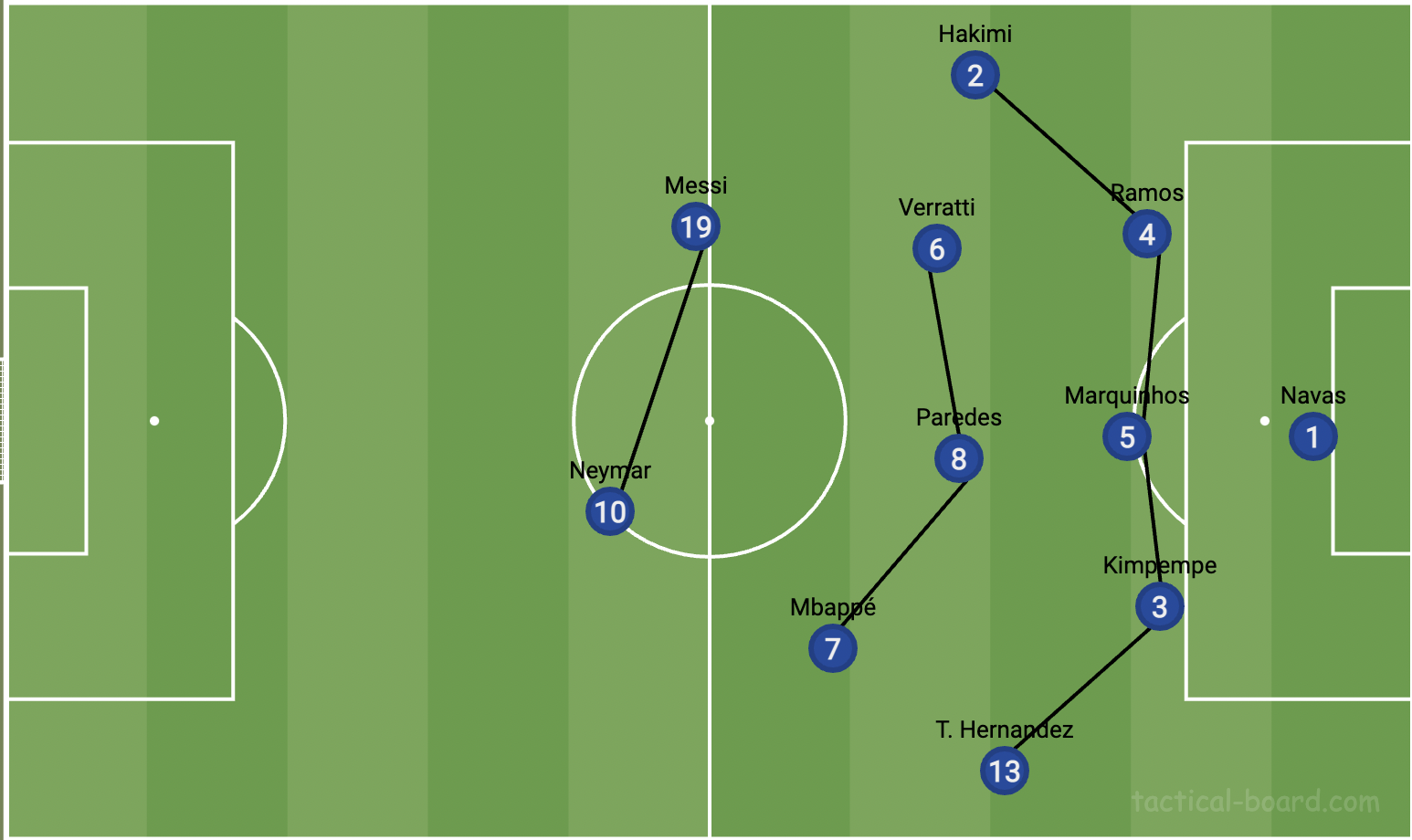Blog: Analysis of Messi’s possible move to PSG
On August 3rd 2017 PSG announced the signing of Neymar Jr from Barcelona for a reported €222 million, in the most mind-blowing transfer the sport had ever seen, a move that was described as an attempt from the Brazilian to get out of Lionel Messi’s shadow. After a relatively quite two years at the club, the Brazilian reportedly asked for a move back to his former club in the summer of 2019, a request that was swiftly turned down by PSG’s powerful owner Nasser Al-Khelaifi.
Two years after Neymar’s transfer request, Barcelona announced that Leo Messi will not be renewing his contract at the club, after a dispute with La Liga and their financial problems made it impossible for the deal to occur. In all likelihood, the greatest player of our generation will join his old friend at PSG in a stunning power move from the Parisians, that leaves the Catalans in despair.
The transfer market in football works in truly amusing ways.
Few words on Barcelona’s side
The events that led to this sad day for the Catalan football club, are no secret. In fact they are incredibly obvious and public.
As is displayed in the above graphic, Barcelona have spent close to a billion euros since Neymar’s exit in 2017, for a grand total of 30 first team players, however the number of them that proved to be a net-positive contributor on the pitch can be counted with the fingers of one hand. This shocking use of resources, not only led to a decline in the team’s footballing performance, but also to inevitable financial struggles, as the team’s wage structure is not sustainable under La Liga’s salary cap, which is the reason that ultimately led to Messi’s non-renewal.
As Real Madrid have shown in the post Cristiano Ronaldo era, it is immensely difficult to replace an all-time great footballer, so some of the sporting decline that is about to occur cannot be avoided, however the utter failure that Barca have showed in their attempts to prepare for the post Messi era is absolutely embarrassing. When they lost Neymar, they didn’t only lose a world-class player, they also lost Messi’s natural replacement as the Barcelona poster-boy. They attempted to make up for it with multiple huge-money flops, such as Philippe Coutinho, Ousmane Dembélé and Antoine Griezmann.
In my view, this was by far the biggest failure in Barcelona’s strategy the past few years. Now with Messi gone, I struggle to believe that they’ll be able to attract the calibre of player that is up to that task. This will be made even more difficult by the gargantuan debt the club is under. Things are looking bleaker than ever in the Catalan capital.
PSG’s ambition and their big domino
Aside from the obvious names of Neymar and Kylian Mbappé, PSG positioned themselves as a very attractive destination for a player of Messi’s status through their ambitious transfer strategy this summer. The Parisians have already announced the signings of Sergio Ramos, Gigi Donnarumma, Achraf Hakimi and Gini Wijnaldum, and have been linked to Paul Pogba and Theo Hernandez as well.
As incredible as this PSG side is looking, the biggest domino of all is the future of Kylian Mbappé. The young superstar who is the profile that completes PSG’s potential front three along with Messi and Neymar, has only one year left in his contract and has been strongly linked with a move to Real Madrid. In my opinion, it is absolutely imperative that PSG’s sporting director Leonardo manages to convince Mbappé to stay, as he is the X-factor in PSG’s project, that could ultimately make it fail or succeed. From a long-term planning perspective, he is obviously very young at only 22 years old, and with Messi’s advanced age and Neymar’s ever declining fitness, the Frenchman will be the glue that holds this project together.
Messi’s arrival could impact Mbappe’s future in two different ways. On the one hand, the prospect of playing next to the greatest of all time could be just what he needed to put pen to paper in his new contract. On the other hand, he might see this as a prime opportunity to exit out of the shadow of his senior superstars, and go build his own brand in La Liga, where they now desperately need a new face of the league, with Messi and Ronaldo departing in the space of three years.
How it all fits together on the pitch: with the ball
It has been speculated that PSG head coach Mauricio Pochettino will use a 3-4-3 formation this season, due to the arrivals of Ramos and Hakimi. However, in pre-season we have seen them line up in a 4-3-3, which makes a lot of sense for their squad and is also the formation I think makes the most-sense for them.
In the above rendition of the 4-3-3, I see a very balanced XI. Some key parts:
Hakimi’s ability as an attacking wide outlet is huge, and fits great with Messi, giving him the overlap option.
Marquinhos as the #6 is a role Pochettino could take out of Thomas Tuchel’s playbook. We saw the German use him in that position in their Champions League campaign in 2019/20, dropping in the defensive line in the build up to create a back 3 and push the fullbacks higher and the center backs wider. He also provides the versatility to switch to a 5-2-3 out of possession.
Diallo as LB/LCB hybrid is another versatile and useful option. He can stay back in the 3-2 structure to protect for transition, and he is also comfortable carrying the ball forward from wide.
Wijnaldum at LCM is the Swiss-army knife for this system. We have seen him for Liverpool function in a flat midfield (more on that later), staying deeper to protect transition, but he has also succeeded in a more advanced role for Newcastle and the Netherlands NT, joining the attacking line from deep and making late runs in the box. His knack for counter-pressing opportunities could also cover up their forwardss weaknesses in that aspect.
Verratti could drop deeper to cover up for Hakimi, or control the whole midfield on his own in the build-up, due to his superb technical security on the ball
In terms of the front 3, Messi and Neymar would drop deep in the half-spaces and also central areas, and wreak havoc as playmakers. Mbappé’s profile as an elite runner and outlet is crucial in balancing the other two who are more “ball-to-feet” players. Expect the Frenchman to do a lot of the goal-scoring in that side.
This lineup could also incorporate another star attacker in Angel Di Maria, with a slight twist:
In a more clear 3-2-5 structure, Marquinhos and Verratti would create the 2 in front of the back 3 (CB’s + Diallo staying deep). Di Maria would function as a left-sided midfielder, a role in which he excelled in Ancelotti’s Real Madrid in 2014. He’d provide another wide option for Mbappé should he want to play closer to goal. I would recommend this approach in games against weaker-opposition, where PSG would favour an extra attacker over the extra midfielder.
PSG have also been heavily linked with AC Milan’s attacking left back Theo Hernandez. I am not sure if after the Messi signing this deal is financially achievable, however, should he come, he would give Poch the option to go to a 3-4-3, a system which makes a lot of sense given PSG’s personnel:
It looks similar to the above diagrams on paper, however there are some key differences:
Marquinhos starts as the de facto center back, with Kimpembe and Ramos either side of him
Hernandez’s role mirrors Hakimi on the opposite side. His athleticism makes him a great wide outlet, and the quality in his delivery a credible attacker in the 3-2-5 structure. He will provide an overlapping option on the left that will allow Mbappé to operate closer to goal, instead of the touchline.
This calls for a double pivot. Pochettino could opt for Leandro Paredes instead of Wijnaldum as a more natural DM. If not, we could see Marquinhos in that role, with Diallo replacing him in the back 3, like previously.
How it all fits together on the pitch: without the ball
Now this is the big issue with Messi to PSG. It was already noticeable that Pochettino would let the front 2, Mbappé & Neymar, in his defensive scheme (4-4-2), have a free role staying high up to create transitional opportunity. This came at the expense of extra defensive compactness and pressing from the front. Adding a third player who was barely had any defensive duties in the last few years in Messi, creates a big problem that can be exploited by the best teams and coaches.
One of the 3 will simply have to be an engaged defensive player for the team, and I imagine this will likely be Mbappé, due to his youth and athleticism. Even then, it will be difficult to make it work.
When using the 3-4-3, PSG could defend in the above 5-3-2 structure. It would cover the channels very well, but still the second and third lines of the block would have an extra workload due to the burden of Messi and Neymar in the side.
When using a 4-3-3:
Pochettino’s preferred 4-4-2 mid block could be the most sensible choice here. It mostly worked very well in the 20/21 Champions League run, and it mostly suits the personnel here.
Still, no matter what defensive shape PSG’s head coach uses, it’s gonna be reliant on 8 players carrying the front 3, while pressing and blocking space with intensity. It’s a fascinating tactical conundrum for the Argentinian gaffer.
Closing thoughts
The potential PSG side of 2021/22 could definitely be the most exciting team to ever watch for the neutrals, but there is also a non-negligible chance it proves to be an ultra-expensive failure. It is down Messi-Neymar-Mbappé, the other 8 players that will be on the pitch alongside them, and Mauricio Pochettino to find a solution that pushes them to perform up to their potential.
Written by @NSftbl








